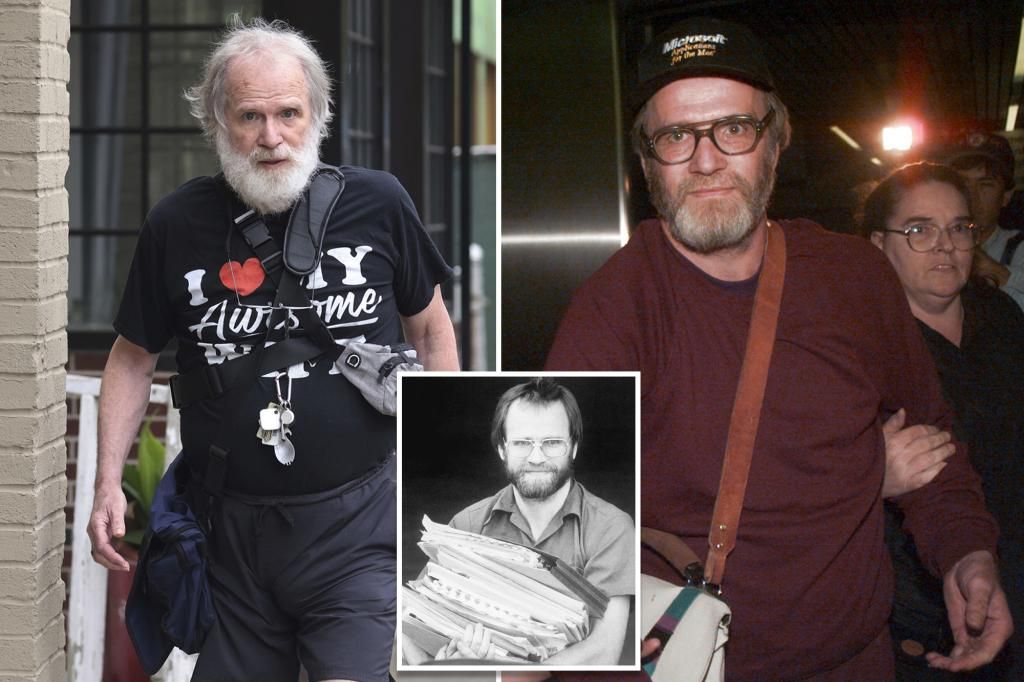James Lewis, longtime suspect in the 1982 Tylenol murders, dead at 76
James Lewis — the longtime suspect in the cyanide-laced Tylenol poisonings that killed seven people in the Chicago area in 1982 — died in his home Sunday.
Lewis was pronounced dead by medics in his Cambridge, Massachusetts house after they responded to a 911 call of an unresponsive person at about 4 p.m., police said. He was 76.
Police said his death was not suspicious.
Lewis was the prime — and only — suspect in the Tylenol murders that shocked the country and forever changed pharmaceutical packaging.
He was never charged with the killings and the case remains open, but he was convicted of the lesser charge of extortion related to the deadly scheme.
Lewis served 12 years in prison for sending a letter to Johnson & Johnson, the manufacturer of Tylenol, demanding the company fork over $1 million “to stop the killing.”
James Lewis has repeatedly denied being the Tylenol killer. TNS
Following his release from prison in 1995, Lewis and his wife moved to Massachusetts, where they have remained since.
Lewis was arrested in 1982 after seven people — including a 12-year-old girl — in the Chicago area died after taking Tylenol pills that had been filled with cyanide over the span of three days. The pain-relief pills were recalled nationwide and the country later made tamper proof packaging for over-the-counter medications the standard.
After a frenzied manhunt across the US, Lewis was nabbed in New York City, where he told investigators a detailed account of how the killer may have been able to pull off the poisonings.
Years later, he told the Associated Press that the account he provided was his way of rationalizing how the mass murderer could have managed the complex scheme.
Lewis holds documents at federal court, on June 5, 1984, in Kansas City, Mo. AP
“I was doing like I would have done for a corporate client, making a list of possible scenarios,” Lewis told the outlet in 1992.
He called the killer “a heinous, cold-blooded killer, a cruel monster” and maintained his innocence throughout his life — only admitting to penning the extortion letter. He said that he was living in New York City at the time of the deaths although he and his wife briefly lived in Chicago in the early 1980s.
The Tylenol poisonings were not the first time Lewis — who investigators described as a “chameleon” con man — had been investigated for murder.
Years earlier, in 1978, he was charged with the dismemberment murder of 72-year-old Raymond West, who had hired him as an accountant, in Kansas City, Missouri. However, the charges were dismissed because some evidence had been illegally obtained and West’s cause of death was unknown.
Lewis is escorted through Boston’s Logan Airport, on Oct. 13, 1995, after being released from the Federal Correctional Institution in Oklahoma. AP
He was also convicted of six counts of mail fraud in the same city in a 1981 credit card scheme, in which he used the name and information of a former tax client to open 13 credit cards.
His alleged crimes continued even after he was released from prison on the extortion charges.
In 2004, Lewis was slapped with rape, kidnapping and related charges for allegedly assaulting a woman in Cambridge. He spent three years in jail while awaiting trial but the case never went to court and prosecutors dismissed the charges after the victim refused to testify.
Family members of the Tylenol killing victims have long been frustrated by the lack of justice for their loved ones.
Investigators took up the case again in 2009 and the FBI seized a computer and other items from Lewis’ home in February that year. The following year, he provided DNA samples to the FBI, but still no charges were announced.
Helen Jensen, a nurse who helped treat the first victims at a Chicago hospital said she hoped Lewis’ death would bring the families some closure — even if it’s not a conviction and prison sentence.
“His death is a conclusion. Not necessarily the conclusion everyone wanted,” said Jensen, who retired years ago. “But it is an end. I’m 86 now. And I am glad I got to see the end before I die.”
With Post wires
Source: New York Post


